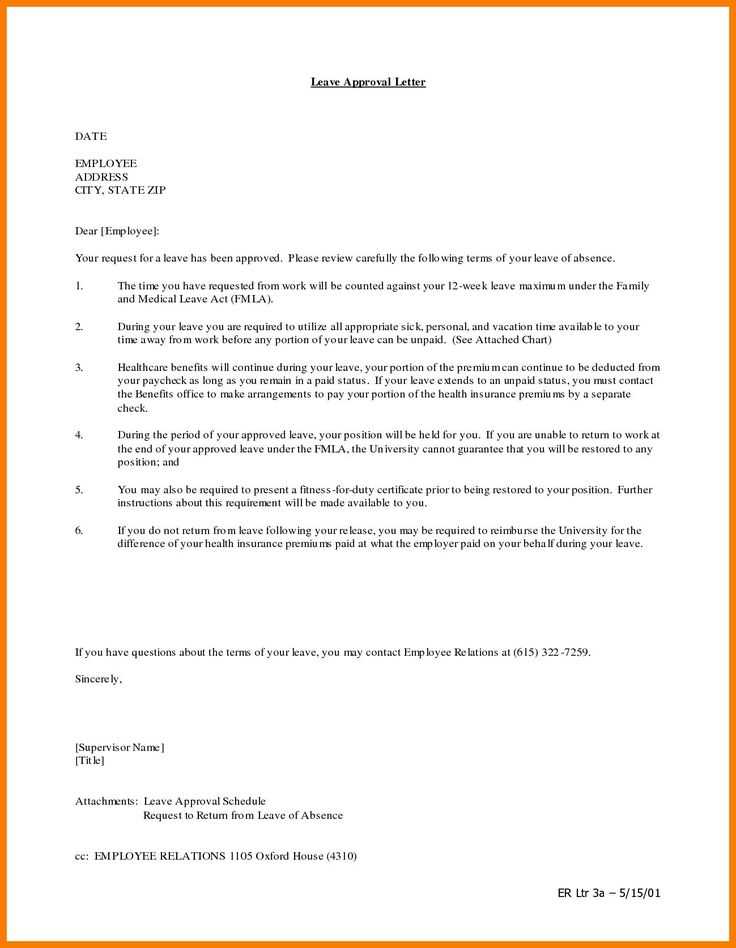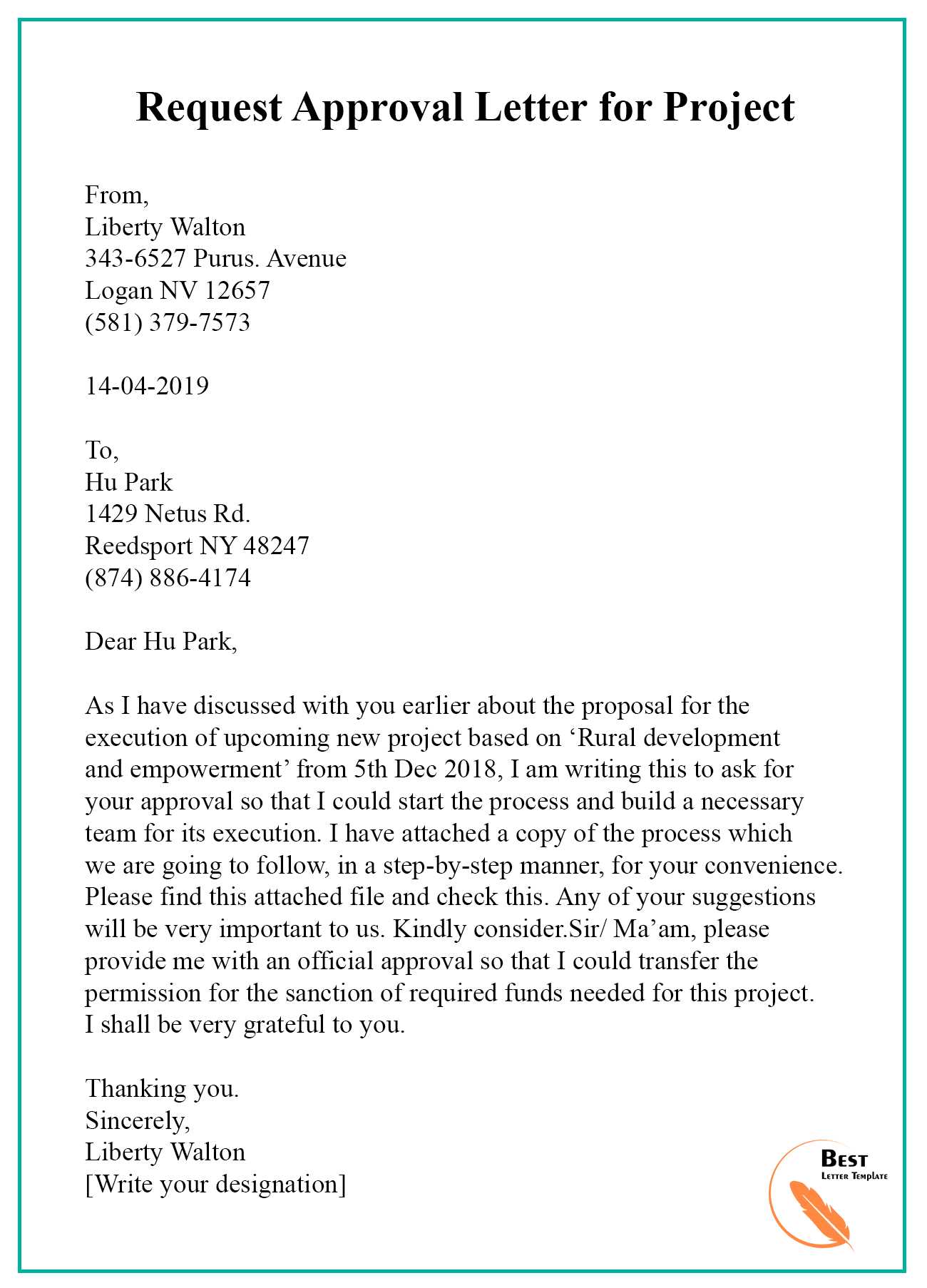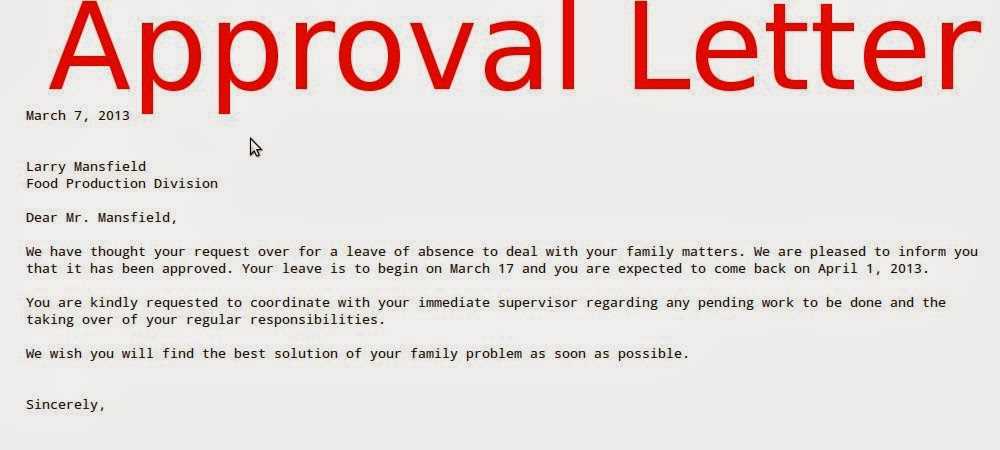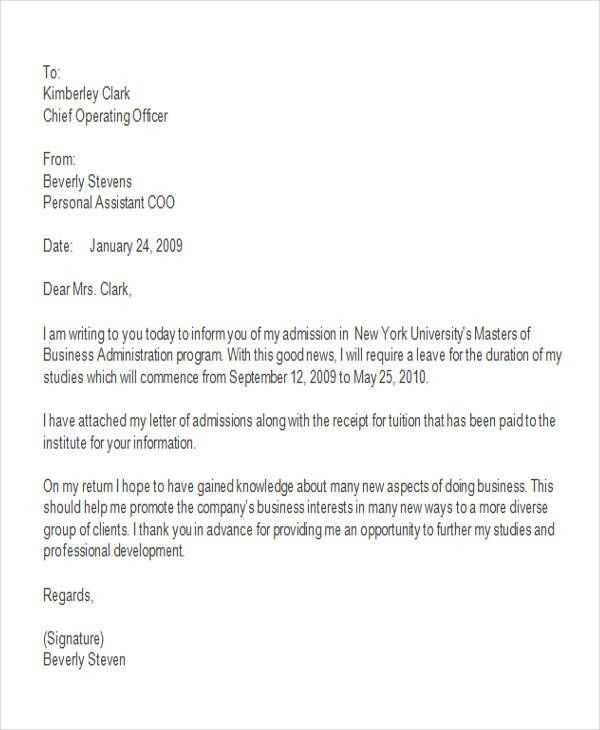Effective Leave Approval Letter Template for Employees

When managing workplace absences, clear and formal communication is essential for maintaining smooth operations. Employees may need time off for various reasons, and employers must ensure that these requests are handled professionally. A structured approach helps prevent confusion and ensures both parties understand the terms of the absence.
To facilitate this process, having a clear and consistent document that outlines the terms of the time off is crucial. Such documents not only protect both the employer and employee but also foster transparency in the workplace. Understanding how to create and use this type of communication tool can significantly improve time-off management.
In this guide, we will explore how to craft an effective document that confirms time-off approval, including key details to include, the tone to adopt, and practical examples. Following a well-defined format can save time and ensure compliance with company policies.
How to Approve Employee Time Off Requests
Granting time off to employees is an important aspect of maintaining a balanced work environment. It requires clear communication to ensure that both the employee and employer understand the expectations and conditions. Approving such requests involves more than simply confirming the dates; it requires thoughtful consideration of workload, policies, and the overall impact on the team.
When responding to a request, it is essential to follow a structured approach that outlines the terms of the time away, such as the duration and any necessary conditions. This helps prevent any misunderstandings and ensures that the employee is aware of their responsibilities, while also allowing the business to plan effectively for the absence.
A well-structured response should acknowledge the request, confirm the dates, and address any specific requirements. It is also important to consider how this absence might affect the team and the business operations. Clear guidelines and prompt communication contribute to a positive work environment and help maintain employee satisfaction while minimizing disruptions.
Why a Formal Approval Letter Matters
Having a structured document to confirm time-off requests plays a vital role in maintaining clarity and professionalism in the workplace. Such formal communication ensures that both the employer and employee are on the same page regarding the terms of absence, including dates, expectations, and any necessary follow-up. Without this level of formality, misunderstandings and disputes may arise, affecting productivity and team morale.
Benefits of Using Formal Confirmation

- Clarity: It clearly communicates the terms of the time off and sets expectations for both parties.
- Recordkeeping: Provides an official record for future reference, ensuring compliance with company policies.
- Professionalism: Demonstrates a well-organized approach to handling employee requests.
- Consistency: Ensures all employees are treated equally and fairly when requesting time away from work.
What Could Happen Without It
- Miscommunication: Without a formal response, both parties might have different expectations, leading to confusion.
- Increased Disputes: Absences without clear confirmation may result in disagreements about the terms or timing.
- Inconsistent Practices: Informal handling of requests could lead to unequal treatment of employees.
Using a formal communication process ensures both transparency and efficiency in managing employee time off. It safeguards the interests of the company while fostering trust and clear communication with employees.
Key Details to Include in the Letter
When confirming an employee’s time away from work, it’s important to include specific details that clearly outline the terms and conditions of the absence. These details help ensure both the employee and employer have the same understanding of the arrangement, preventing potential confusion or disagreements. Including essential information in the response ensures clarity and sets expectations for both parties involved.
Essential Elements to Include
- Employee Information: Include the employee’s name, job title, and department for identification purposes.
- Dates of Absence: Clearly specify the start and end dates of the requested time off.
- Reason for Absence: While not always required, stating the reason provides context and shows understanding.
- Conditions or Requirements: Include any conditions, such as returning to work on a specific date or completing certain tasks before the absence.
- Approval Status: Clearly state whether the request has been granted or declined.
Additional Considerations

- Replacement or Coverage: If applicable, mention arrangements for covering the employee’s duties during their absence.
- Contact Information: Provide details on how the employee can be reached if needed during their time away.
- Sign-off: End the communication with a professional sign-off, acknowledging the importance of the request and wishing the employee well.
Including these key elements helps maintain a smooth process for managing time-off requests, creating a record that both parties can reference as needed.
Tips for Writing a Professional Letter
Crafting a well-written document to confirm an employee’s request for time away requires attention to detail and a professional tone. The communication should be clear, respectful, and concise, ensuring that all necessary information is included while maintaining a positive relationship between the employer and employee. A carefully constructed response reflects professionalism and contributes to a smoother workplace dynamic.
Maintaining a Professional Tone
- Be Polite: Always use courteous language, regardless of whether the request is approved or declined.
- Stay Concise: Avoid unnecessary details and focus on the core information. Employees appreciate clear and straightforward communication.
- Use Proper Formatting: Ensure the response is well-organized with appropriate spacing, headings, and a formal structure.
- Stay Neutral: Even if the request cannot be granted, express understanding and provide a constructive explanation.
Clarity and Accuracy
- Double-Check Dates: Make sure all dates and times are correct, especially if they pertain to the start and end of the requested absence.
- Avoid Ambiguity: Use precise language to prevent any misinterpretations about the terms of the time away.
- Include Relevant Information: Ensure all necessary details are provided, such as any special conditions or next steps.
By following these tips, employers can ensure that their responses are professional and effective, fostering a positive and efficient process for handling employee time-off requests.
Leave Approval Letter Sample Templates
Having a structured example can simplify the process of confirming an employee’s time away from work. By using a well-organized format, employers can ensure that all necessary information is included, and the communication remains professional. Here, we will provide sample formats that can be adapted to different situations, allowing for efficient and clear responses to time-off requests.
Basic Sample Format
This simple example includes the key components necessary for confirming a request:
[Employee's Name] [Employee's Position] [Date]Dear [Employee's Name],I am writing to confirm your request for time off from [start date] to [end date]. Your absence has been approved and your responsibilities will be covered during this time.If any issues arise or you need further assistance, please feel free to contact me.Best regards,[Your Name][Your Position][Company Name]
Extended Sample with Conditions
This format includes additional details and conditions that may apply to the absence:
[Employee's Name] [Employee's Position] [Date]Dear [Employee's Name],This letter serves as confirmation that your request for time off from [start date] to [end date] has been approved. During this period, we expect you to [mention any conditions or responsibilities, if applicable].Please ensure that any pending tasks are completed prior to your departure or that someone is assigned to handle them in your absence. If you need assistance with this, feel free to reach out.Wishing you a restful time away.Best regards,[Your Name][Your Position][Company Name]
These examples can be customized to fit specific company policies or individual circumstances, making them a versatile tool for managing time-off requests.
Managing Time Off Requests in the Workplace

Effectively managing employee time off is crucial for maintaining a productive and well-organized workplace. A systematic approach ensures that all requests are handled fairly and efficiently, while also minimizing disruptions to the daily operations of the business. Clear communication and proper documentation are essential in maintaining a smooth process for both employers and employees.
Steps to Manage Time-Off Requests
When managing time away from work, it’s important to follow a consistent procedure that includes the following steps:
- Evaluate the Request: Consider the timing, duration, and impact on the team and operations.
- Communicate Clearly: Ensure that both the employee and the team are aware of the planned absence and any necessary adjustments.
- Document the Request: Record all time-off requests and approvals for future reference and compliance with company policies.
- Ensure Coverage: Make arrangements for work to be covered or reassigned during the absence to maintain productivity.
Tracking Time Off Requests
It’s important to keep track of all requests and ensure that employees have not exceeded their allowed time off. The following table can be used to monitor employee absences and approvals:
| Employee Name | Request Dates | Status | Notes |
|---|---|---|---|
| John Doe | February 10 – February 14 | Approved | Covered by Jane Smith |
| Mary Johnson | March 5 – March 7 | Pending | Awaiting manager confirmation |
| James Lee | April 1 – April 3 | Denied | Not enough remaining days |
By following a structured approach and keeping accurate records, employers can effectively manage time-off requests while ensuring fairness and minimizing any negative impact on the workplace.